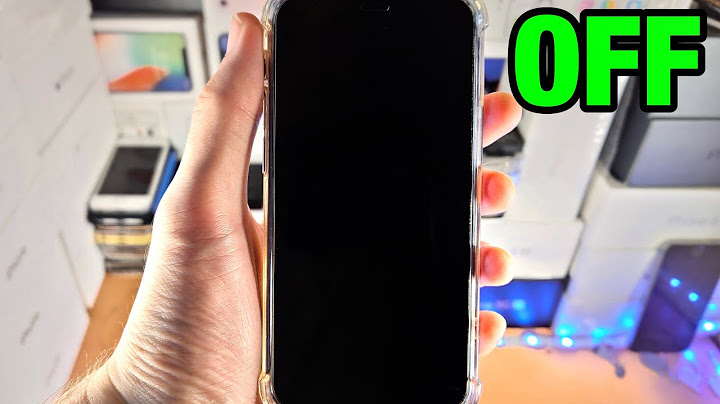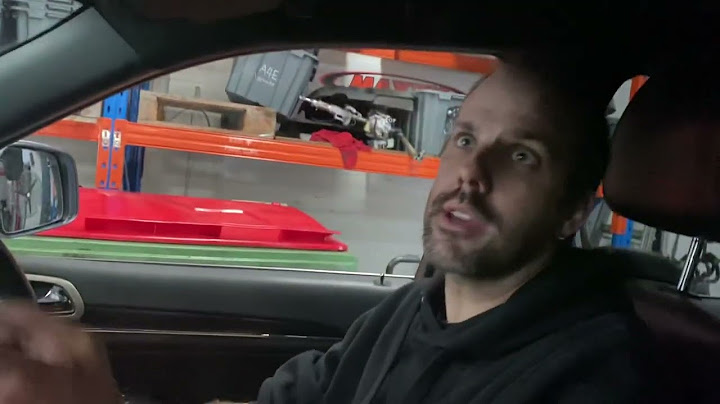Video transcriptWrite 7/4 as a mixed number. So right now it's an improper fraction. 7 is larger than 4. Let's write it is a mixed number. So first I'm just going to show you a fairly straightforward way of doing it and then we're going to think a little bit about what it actually means. So to figure out what 7/4 represents as a mixed number, let me write it in different colors. So this is going to be equal to-- the easiest way I do it is you say, well, you divide 4 it 7. If we're dealing with fourths, 4 goes into 7 a total of one time. Let me do this in another color. 1 times 4 is 4. And then what is our remainder? 7 minus 4 is 3. So if we wanted to write this in plain-- well, let me just do the problem, and then we'll think about what it means in a second. So you see that 4 goes into 7 one time, so you have one whole here, and then how much do you have left over? Well, you have 3 left over, and that comes from right over there. That is the remainder when you divide 4 into 7. 3 left over, but it's 3 of your 4, or 3/4 left over. So that's the way we just converted it from an improper fraction to a mixed number. Now, it might seem a little bit like voodoo what I just did. I divided 4 into 7, it goes one time, and then the remainder is 3, so I got 1 and 3/4. But why does that make sense? Why does that actually makes sense? So let's draw fourths. Let's draw literally 7 fourths and maybe it'll become clear. So let's do a little square as a fourth. So let's say I have a square like that, and that is 1/4. Now, let's think about what seven of those mean, so let me copy and paste that. Copy and then paste it. So here I have 2 one-fourths, or you could see I have 2/4. Now I have 3 one-fourths. Now, I have 4 one-fourths. Now this is a whole, right? I have 4 one-fourths. This is a whole. So let me start on another whole. So now I have 5. Now I have 6 one-fourths, and now I have 7 one-fourths. Now, what does this look like? So all I did is I rewrote 7/4, or 7 one-fourths. I just kind of drew it for you. Now, what does this represent? Well, I have 4 fourths here, so this is 4/4. This right here is 3/4. Notice, 7/4 is 4/4 with 3/4 left over. So let me write it this way. 7/4 is 4/4 with 3/4 left over. Now what is 4/4? 4/4 is one whole. So you have one whole with 3/4 left over, so you end up with 1 and 3/4. So that is the 3/4 part and that is your one whole. Hopefully that makes sense and hopefully you understand why it connects. Because you say, well, how many wholes do you have? When you're dividing the 4 into the 7 and getting the one, you're essentially saying how many wholes? So the number of wholes, or you can imagine, the number of whole pies. And then how many pieces do we have left over? Well, we have 3 pieces and each piece is 1/4, so we have 3/4 left over. So we have one whole pie and three pieces, which are each a fourth left over. Show
In order to convert an improper fraction to a mixed number, we need to divide the numerator by the denominator. After the division, the mixed number is formed in such a way that the quotient that is obtained becomes the whole number, the remainder becomes the new numerator and the denominator remains the same. Let us learn more about converting an improper fraction to mixed number in this lesson. Conversion of Improper Fraction to Mixed NumberAn improper fraction is a fraction in which the denominator is always less than the numerator. For example, 9/2 is an improper fraction. A mixed fraction or a mixed number is a combination of a whole number and a proper fraction. For example, \(2\dfrac{1}{7}\) is a mixed number where 2 is the whole number and 1/7 is the proper fraction. To convert an improper fraction to a mixed number, we need to divide the numerator by the denominator and then find out the remainder and the quotient. Now, the quotient becomes the whole number of the resultant mixed fraction, the remainder becomes the numerator part of the mixed fraction and the denominator part remains the same. Example: Convert the improper fraction into a mixed number: 7/3 Solution: On dividing 7 by 3, we get 2 as the quotient and 1 as the remainder. Thus, 7/3 will be written as \(2\dfrac{1}{3}\) as a mixed number.  How to Convert Mixed Number to Improper Fraction?As we already know that an improper fraction is a fraction where the numerator is more than the denominator and a mixed number consists of a whole number and a proper fraction. So, while converting a mixed number into an improper fraction we multiply the denominator by the whole number then add the product with the numerator. Example: Let us convert the mixed number, \(5\dfrac{1}{7}\) to an improper fraction. Solution: We will multiply the number 7 by 5 and the product is 7 × 5 = 35. To this, we will add the numerator 1, which makes it 35 + 1 = 36. Now, 36 becomes the new numerator and the denominator 7 remains the same. Therefore, \(5\dfrac{1}{7}\) is changed to an improper fraction and is written as 36/7. Adding Improper Fraction to Mixed numberAdding an improper fraction to a mixed number is simple. We need to convert the mixed number into an improper fraction and then we need to check the denominators of the given fractions which should be the same. In case they are the same, then the numerators can be added while the denominator remains the same. However, if the denominators are different, then they need to be changed to a common denominator. This is done by finding the LCM of the denominators and then the fractions can be added. When the denominators are same Example: Add 6/5 and \(4\dfrac{1}{5}\) Solution: We will convert \(4\dfrac{1}{5}\) into an improper fraction \(4\dfrac{1}{5}\) = 21/5 Now, add the numerators: 6/5 and 21/5 (6 + 21)/5 = 27/5. Now, we will finally convert this improper fraction to a mixed number = \(5\dfrac{2}{5}\) When the denominators are not the same Example: Add 6/5 and \(4\dfrac{1}{6}\) Solution: We will convert \(4\dfrac{1}{6}\) into an improper fraction \(4\dfrac{1}{6}\) = 25/6 Now, add 6/5 and 25/6 Since the denominators are different, we will make their values equal. For this, we need to find the Least Common Multiple (LCM) of the denominators. The LCM of 5 and 6 is 30. Now, we multiply both the fractions with such a number so that the denominators become the same. This means we will multiply 6/5 with 6/6, that is, 6/5 × 6/6 = 36/30. And we will multiply 25/6 with 5/5, that is, 25/6 × 5/5 = 125/30. Now, they can be added and written as (36 + 125)/30 = 161/30. Now, let us convert the improper fraction to a mixed number: 161/30 = \(5\dfrac{11}{30}\) ☛ Related Links
FAQs on Improper Fraction to Mixed NumberHow to Convert Improper Fraction to a Mixed Number?In order to convert an improper fraction to a mixed number, we need to divide the numerator by the denominator and find out the quotient and the remainder. Now, the quotient becomes the whole number of the resultant mixed fraction and the remainder becomes the numerator part of the mixed fraction while the denominator part remains the same. For example, to convert 9/5 to a mixed number, we divide 9 by 5. After the division, we get 1 as the quotient and 4 as the remainder. So, 1 becomes the whole number and 4 becomes the new numerator of the resultant mixed fraction, thus, making it \(1\dfrac{4}{5}\) How do you Convert a Mixed Number to an Improper Fraction?In order to convert a mixed number to an improper fraction, we multiply the denominator of the mixed number by the whole number. After getting the product, we add the product and the numerator which will make it into an improper fraction. For example, let us convert \(8\dfrac{3}{5}\) to an improper fraction. We will multiply 5 by 8 and then the product 40 will be added to 3. The resultant improper fraction will be 43/5. How to Change the Improper Fraction 34/8 to a Mixed Number?First, we will divide the numerator 34 by 8 and then find the remainder and the quotient. On dividing 34 by 8, we get 4 as the quotient and 2 as the remainder. Thus, the quotient 4 becomes the whole number and 2 becomes the new numerator of the resultant mixed number, thus, making it \(4\dfrac{2}{8}\) How to Convert a Negative Improper Fraction to a Mixed Number?A negative improper fraction can be changed to a mixed number in the same way as we do any other positive improper fraction. The only change is the negative sign that will go along the converted mixed fraction. For example, let us convert -13/4 to a mixed number. We will first divide 13 by 4, which will give the quotient as 3 and the remainder as 1. Therefore, the mixed number will be written as -\(3\dfrac{1}{4}\) What is the First Step to convert 22/3 from an Improper Fraction to a Mixed Number?The first step to convert an improper fraction to a mixed number is to divide the numerator by the denominator. After this step, the quotient that is obtained becomes the whole number, the remainder becomes the new numerator and the denominator remains the same. In this case, 22/3 need to be converted to a mixed number. So, the first step is to divide 22 by 3. 22 ÷ 3 gives 7 as the quotient and 1 as the remainder. The resultant mixed number will be written as \(7\dfrac{1}{3}\) How do you turn a fraction into a whole fraction?To put this another way: to turn a mixed number into a fraction, multiply the whole number by the denominator (the bottom part), and add the result to the numerator (the top part).
How do you change a improper fraction into a whole number or mixed number?In order to convert an improper fraction to a mixed number, we need to divide the numerator by the denominator. After the division, the mixed number is formed in such a way that the quotient that is obtained becomes the whole number, the remainder becomes the new numerator and the denominator remains the same.
|

Related Posts
Advertising
LATEST NEWS
Advertising
Populer
Advertising
About

Copyright © 2024 ihoctot Inc.


















